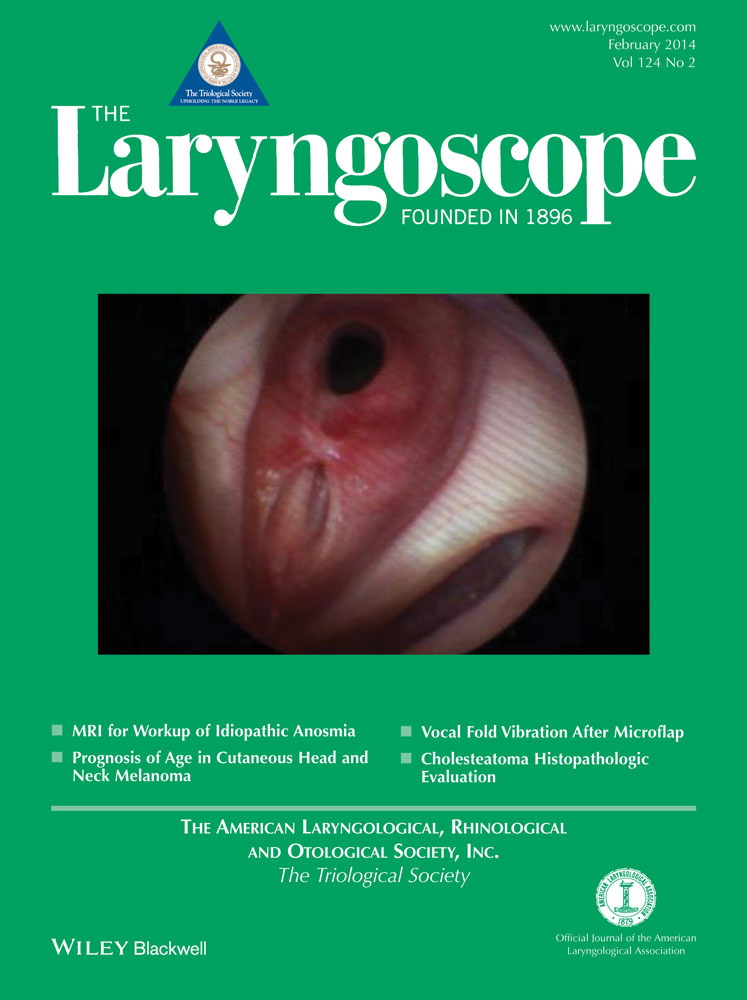Age is an independent poor prognostic factor in cutaneous head and neck melanoma
The authors have no funding, financial relationships, or conflicts of interest to disclose.
Abstract
Objective/Hypothesis
To evaluate age as an independent prognostic factor in cutaneous head and neck melanoma.
Study Design
Prospective case-control study.
Methods
We selected 12,195 patients from the Surveillance, Epidemiology, and End Results database with cutaneous head and neck melanoma diagnosed from 2004 to 2009. Patients were stratified into ages 1 to 44 years, 45 to 64 years, and 65+ years. Meanwhile, stage was stratified into early (American Joint Committee on Cancer [AJCC] stage I-II) versus late (AJCC stage III-IV). We calculated overall survival and compared it to age-matched cancer-free controls to obtain overall relative survival. Finally, we performed a Cox multivariate regression by age and stage.
Results
Age had a statistically significant (P < .05) stratified decrease in overall survival for both early- and late-stage melanoma. However, we only found a statistically significant (P < .05) stratified decrease in overall relative survival for late-stage melanoma. Early-stage melanoma had no statistical difference in overall relative survival between the 45 to 64 years group and all other age groups studied. Finally, our multivariate Cox regression of stage, gender, race, and age found a hazard ratio [HR] of 2.005 (95% confidence interval [CI]: 1.493-1.693, P < .001) for the 45 to 64 years age group, and an HR of 4.174 (95% CI: 3.153-5.526, P < .001) for the 65+ years age group.
Conclusions
Age at diagnosis is a poor prognostic factor for patients with cutaneous head and neck carcinoma. It plays an important role in survival, with a linear increase in risk as age increases. This risk is clinically significant with patients ages 65+ years, having an HR four times the risk of patients 1 to 44 years old.
Level of Evidence
3b. Laryngoscope, 124:462–465, 2014




